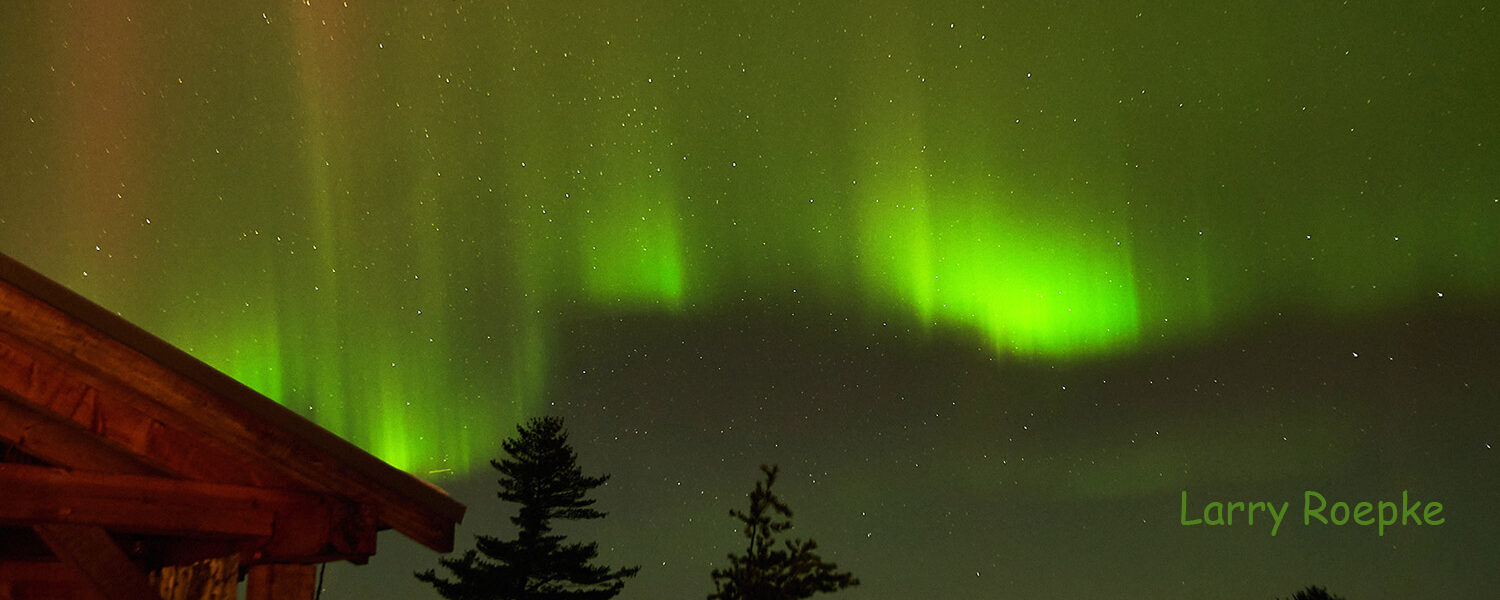Trail Time
Yesterday was a beautiful late winter day on the Gunflint Trail — 33 degrees outside and the sun was shining; a faint breeze from the southeast pushed puffy clouds across a blue sky. Or was it an early spring day? When the sun is shining down on this winter landscape I call it spring. But today it is cloudy and gray with snowflakes falling gently — definitely winter. The angle of the sun climbs higher every day though, and as the temperature warms and the sun comes out, the cool winter palette gives way to the warmer tones of spring. The straight white trunks of the birch trees are rimmed with pale gold light. The color of the morning shadows are less Cobalt Blue and the low angle of the afternoon sunshine stripes the snow with a pale wash of Naples Yellow.
The colors of the night, on the other hand, are deepest midnight blue with bright silver pinpoints of light and shades of green, yellow and red when the aurora borealis arcs, flows and shimmers across the sky and shoots up into pillars toward heaven. We had one of the best displays I’ve ever seen — in the top four, I’d say — the last week of February. As my sky-watching Trail friend, Polymath Dave says, it was definitely a pants-on event!
According to the Ojibwe calendar (Giizisoo-Mazina’igan), March is Snowcrust Moon. The Ojibwe calendar is referred to as The Thirteen Moons and Turtle’s Back, from the time in the creation story after the great flood, when the trickster spirit Nanaboosho put a piece of the earth on Turtle’s back and created the world. There are thirteen 28-day cycles in the calendar, hence thirteen moons.
Though it is the Snowcrust Moon now, when the temperatures warm the snow is not very crusty. It’s more like April, which is either Broken Snowshoe Moon or Sugar Moon, depending on where you live. The consistency of the snow is like mashed potatoes. It is impossible to travel by foot and not pleasant at all to travel by snowshoe. But Lars and I had to do just that for far longer than we wanted last week.
Our dog, Ursa, had taken off through the deep snow into the woods, following some fresh moose tracks down a steep hillside. The snowpack was still about four feet deep then and Lars had taken Ursa for a walk before she bolted. He came back to the cabin to get me and we put on our snowshoes to follow Ursa’s track. I was thinking that she wouldn’t get far in the deep snow. She’s been stuck in it a few times this winter and once she had to be rescued in the middle of the night. (By Lars, not me. I slept soundly through the whole ordeal).
We started our search, following the moose and dog tracks down the hill, struggling through deep, thick snow that clung to snowshoes and thickets of hazel bushes that tangled up ski poles. It was some of the rottenest conditions I’ve ever been in and I was going at a snail’s pace way behind Lars (though faster, he was struggling too, I could tell by the blue air). We were in luck with the temperature and it was early in the day and no rain or snow was falling, but at the moment I didn’t feel very lucky at all. I lasted a couple hours but turned back when Lars yelled, “I don’t even know if I’m following the right trail!” I headed back to the cabin for our walkie talkies so we could split up and stay in contact.
The moose had been making lots of trails all over the place; the deep tracks crisscrossed over one another, as did Ursa’s. It was plain to see the difference between old tracks and new. The heat from the sun had been sculpting the snow on the older trails: rounding edges and smoothing surfaces. All in all, Lars spent about 5 hours combing the thick woods, until finally he strapped on his back-country skis and went along the lakeshore calling for Ursa. By this time Lars and I were communicating by walkie-talkie. I had driven the car up and down the road, looking for Ursa and I had also alerted neighbors to keep an eye out for her. About half a mile down the lake, Lars rested, thinking he ought to turn toward home. So he did, and lying down behind him in his ski tracks was Ursa. She had been in the woods and came down to the lake to find him. She was so exhausted that she had to rest many times on the walk home, encouraged by Lars coaxing her on. It took her a few days to recover. But all is well now.
I had been more concerned with Ursa catching up to a moose and getting kicked to death than with her getting stuck in the snow. I learned the deep wet snow of Broken Snowshoe Moon can be as dangerous as any moose, wolf or bear.
This is Marcia Roepke on the Gunflint Trail
To learn more about the Ojibwe calendar, go to
https://ojibwe.net/projects/months-moons/
There’s a PDF worksheet you can download to learn about counting the moons on the turtles back.
To listen to the names of the moons in Ojibwe, go here:
https://www.nps.gov/apis/learn/historyculture/ojibwemowin-moons.htm
It’s important to hear Ojibwe as well as read it. Because of the genocide and marginalization of Native American speakers and the subsequent Indian boarding schools which banned the speaking of Ojibwe, it was an endangered language. Many dedicated people are working hard to keep it alive. If you’d like to learn Ojibwe, go to Cook County Higher Education and sign up for a class:











